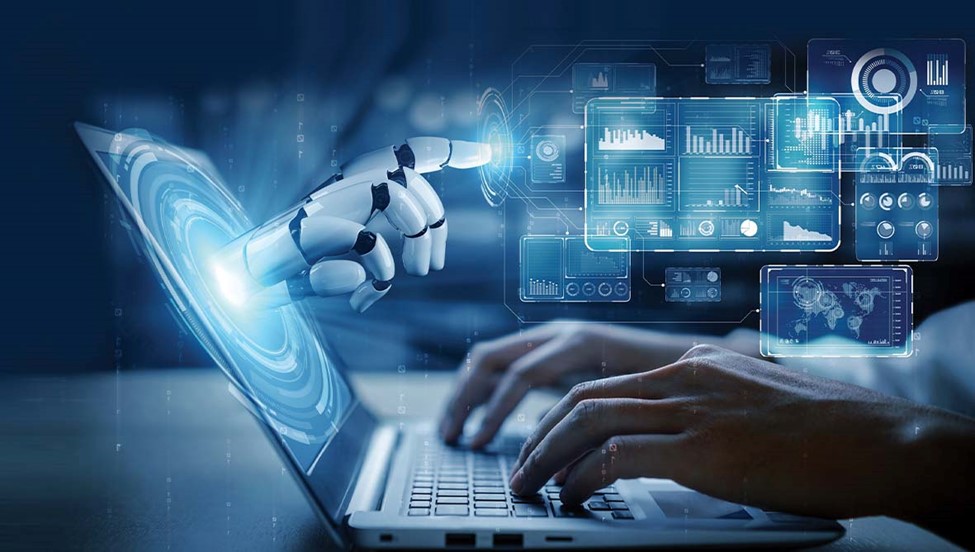For companies looking to hire, posting the vacancy on the business-focused media platform LinkedIn might seem obvious. After all, that’s the choice for over 58 million companies listed on LinkedIn, according to statistics from Omnicore, a digital marketing agency. Omnicore published its research in February when there were 15 million job listings.
LinkedIn says 49 million people use the platform to look for jobs yearly, so it might still be difficult for companies to find suitable candidates. Berlin-based culture transformation expert Florian Feichtinger described the following scenario: The HR department has posted a vacancy and asked current employees to refer potential candidates. Yet they’re getting the right people for the job.
That is, some experts suggest, where LinkedIn “talent influencers” might come in. They are the “world’s thought leaders, experts, innovators and thinkers of a specific industry who put out organic, quality content to a big LinkedIn audience,” said Neal Schaffer, who has written “The Age of Influence: The Power of Influencers to Elevate Your Brand” and other books about maximizing a brand’s LinkedIn presence. According to Feichtinger, talent influencers can also positively affect the companies where they work.

Right hire
Since the onset of the COVID-19 pandemic, there have been several shifts in hiring trends. Engy Mahmoud, HR operations and digital transformation senior lead at Vodafone Egypt pointed to a few of them at an AmCham event in June. She said some of those trends include the great resignation and the “great admin liberation,” the sense of freedom from mundane tasks that came with the widespread adoption of digital systems during the lockdowns.
Such trends often make hiring difficult. Instead, the “talent you are seeking” cannot find the listing through the “noise” of LinkedIn, Feichtinger said. There can be millions of job openings listed on LinkedIn that make cliches such as “the best work culture,” “great benefits,” or “competitive salary” miss the target applicants. Instead of breaking through the noise, this might mean companies are just adding to it.
Another reason might be a lack of value in the listing or how your connections share the job-opening post. “We are all overwhelmed and we filter and decide to pay attention to the things that create value for us,” Feichtinger said. Instead, he suggests posting something that will drive people to join the debate and add their opinions which they will do “if it’s interesting to them and if other people in their field see it.”
Feichtinger recommends using offline discussions that often generate insight and learning and posting them. That makes “people more aware of your company values and shows the talent out there that you are really living and breathing your values,” he said. One approach to turn a listing into a post with value is to ask the hiring manager questions relevant to the opening. The resulting listing should look more like a discussion that encourages comments and sharing. Companies can bump their posts up in the LinkedIn algorithm, making it more likely to reach the right person for the job.
Many companies are urging their staff to become influencers. Cisco, for instance, is training its 84,000 employees on how to do it. “Hiring is a team sport,” Chief People Officer Kelly Jones told Fortune magazine in December. “Every person can be a recruiter of top talent for the organization.” By “galvanizing their own social media pages,” Cisco can benefit from the social media presence of employees. This is particularly the case for LinkedIn, the “most common place people hire from nowadays,” Jones said.
She confirmed Feichtinger’s suggestions on the efficacy of creating content with value. “When we have our leaders be the voice of the role they’re hiring for; it’s more effective,” she said. That may come more intuitively for some departments than others, Cisco found out. “If you think about sales, they’re typically high extroverts. They’re used to networking,” she said. Engineering departments “tend not to be as prolific on LinkedIn.”
For some job listings, the hashtag #WeAreCisco aims to promote the company culture. French insurance company Axa uses #AXAbeCBS team in job listings, adding that applicants need to display a #ProudToBeAXA mentality since as an “ambassador you identify and strongly believe in what Axa stands for,” according to a listing for a .press officer in Belgium.
Making an influencer
Jones said Cisco pushes employees to blog about what they’re doing in the organization at a technical level because that shows the “cool work” the company does and attracts the right technical talent for the project. Jones said that training is prevalent for “emerging functions,” such as security and cloud engineering, which are “areas where our engineers know how difficult it is to find, attract and retain top talent.”
However, Jones said LinkedIn talent influencing should be voluntary. It “is about working with the willing, and the willing are definitely there.” For the willing, Cisco organizes training on using LinkedIn to spread awareness of their work.
Personal branding coach Mildred Talabi agreed with the approach. “Employee influencing works best when employees take a ‘vested interest’ in their own social media presence,” she wrote in an article for HRZone, an online guide for HR professionals. In her view, the willing employee will be the best spokesperson for the company. That way, they “seek to contribute to the wider topic their role represents, rather than just the job itself.”
For the motivated, she believes harnessing the power of the personal brand can mean great things for the individual and company alike. She agreed with Jones and other experts that intentionality is a significant factor. “They recognize the vision or cause they’re championing relates to the wider world at large, not just their day job.” In having this outward focus, they are best positioned to “leverage their personal brand to produce direct business results for the organization they work for.”
To encourage employees to channel this power, Talabi recommended starting with senior leadership. “This provides a much better green light signal to the rest of the organization than any colorful brochure your communications department can produce,” she wrote. And it gives employees the freedom and permission to talk about their jobs, attracting the interest of people with similar values.
Furthermore, companies need to “get comfortable with being uncomfortable” and let go of the idea that creating the corporate brand is just a “comms job,” said Anita Veszeli, director of social media and advocacy at Ericsson. That echoes what Jones said about the hiring process being a “team sport.” While there’s no need to deprioritize the comms teams, Talabi noted, the “whole organization must buy into [the brand] in order for it to work.”
It is vital for companies to recognize and celebrate those influencers, Talabi wrote. Not just celebrate their posts, but celebrate the positive effects those posts might have on the company, such as attracting strong hires or raising positive awareness.
For some industries and professions, the importance of a personal brand is not new. Since as far back as the late 2000s with the emergence of Twitter, journalists have been encouraged, and oftentimes obliged, to be active on the platform. According to Alex Flanagan, a veteran sportscaster and sideline reporter, the immediacy of information dissemination made it a vital tool. Flanagan needed it “to stay up to date on local fire updates or determine whether or not the shaking I just felt was an earthquake.” Staying up to date wasn’t the only reason, though, as Flanagan quickly realized she could use it to “build a curated group of followers that care about you and what you share” and spread awareness about the team she was covering.
Company culture
Even if a company is not struggling to find talent, influencers can positively affect company culture, especially in times of change, as OrgMapper’s Influence project has proven. That is “an organizational diagnostics tool that identifies your hidden Influencers – the most influential, capable and best-connected employees,” according to the network research company’s website.
When the Czech PPF Group acquired Telenor Hungary, Telenor’s Chief HR Officer Judit Endrei-Kiss initiated collaboration with OrgMapper to “support change management” because it has “become an important pillar of manager-employee dialogue and trust-building,” Endrei-Kiss said.
With the change, there was a shift in how the company operated. “We moved from the former, more informal Scandinavian culture to a Central European system, much more structured and performance-oriented,” Endrei-Kiss said. That caused some fear and uncertainty for employees, who “were afraid of the impact of the change on the atmosphere and community.”
In bringing about discussions on change and company values, influencers were able to help the company navigate the acquisition. “Due to their role, Influencers also help us support our own colleagues,” Endrei-Kiss said.
Additionally, influencers can boost a company’s general profile on LinkedIn, according to Kayti Patterson of physical intelligence agency Xenter Inc., which uses technology to gather physiological data. If HR helps “employees know what to support, which also can show what the organization is all about,” this burnishes a company’s profile by creating the discussions that Feichtinger sees as important for “breaking through the noise” of LinkedIn, whether or not the company is looking to hire.
While being an influencer should always be an individual’s choice, as experts agreed, identifying those with the willingness and potential to generate online discussions and debates can have a lot of value for a company. Whether the effect is evident in the hiring process, a strong brand image, or the ability to navigate change, influencers can really affect how companies do things.
While there is no solid estimate of the number of talent influencers on LinkedIn, the effects of their influence are tangible. Besides, it might not matter how many there are as long as they engage the company’s audience.







